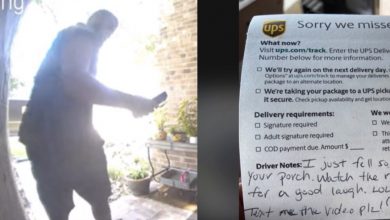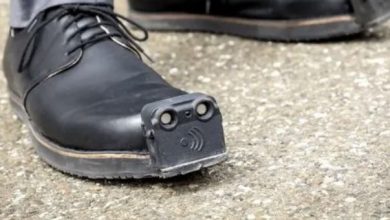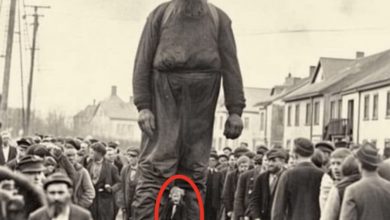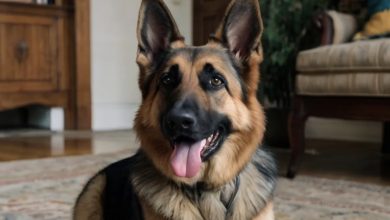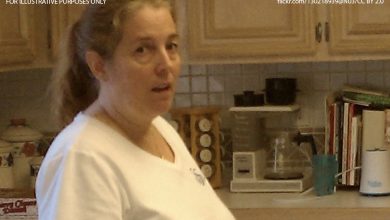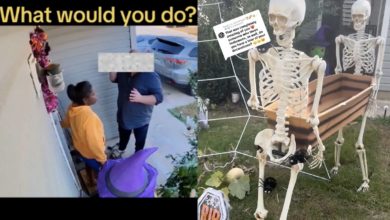“From Picture-Perfect to Honest: How One Hidden Frame Led a Bride to Choose a Different Future”
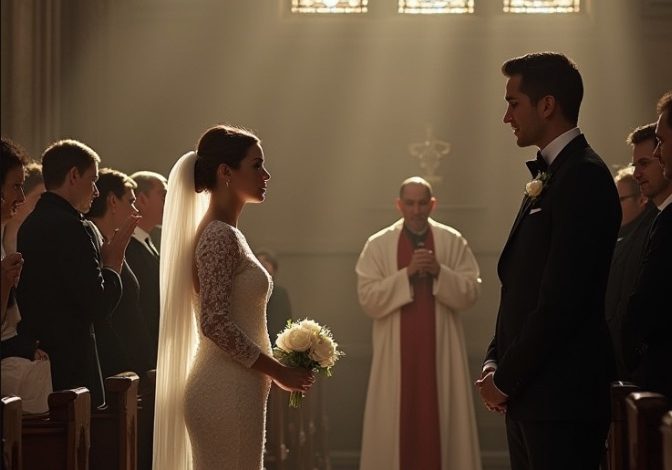
I was the photographer at a perfect wedding—until one candid picture changed everything. After I showed it to the bride, what she did at the altar left the whole room in shock.
I’ve shot more than 300 weddings. I’ve seen nervous grooms, demanding parents, petty arguments, and last-minute chaos. I thought nothing could surprise me anymore. But I had never faced a moment when one image on my camera felt powerful enough to stop a ceremony from happening at all. The wedding of Victoria Reed and Peter Russell was meant to be the peak of my career—an elegant, high-society celebration that would put my name in the best circles. Instead, it became the day I learned that sometimes the most important picture you take is the one that tells the truth, even if it ends a wedding.
My name is Ross Bailey, and wedding photography has been my world for eight years. I didn’t plan it this way. I was a broke freelance photojournalist when a friend begged me to cover her small wedding because she couldn’t afford anyone else. I said yes. That day, in the swirl of happy tears and bad dancing and real laughter, I realized I loved capturing the tiny moments people might miss: the shaky breath before a first look, a mother smoothing a veil with trembling hands, the way two people lock eyes after saying “I do.” It stopped being just a job. It became proof that love, in many forms, still exists.
The Reed–Russell event was different from the start. A polished assistant called me weeks in advance. Her voice was crisp, her words careful. This wasn’t only a wedding; it was a public union of two powerful families.
“Mr. Bailey,” she said, “Miss Reed reviewed your portfolio. She wants you for the entire day. The budget is open. We expect perfection.”
The location was the Reed family estate, a grand mansion passed down for four generations. When I drove up for the site walk-through, I felt like I’d entered a film set: long, manicured lawns, fountains, gardens planned to the inch, and a ballroom large enough to host a small concert. Staff moved like clockwork. Nothing was out of place.
Then I met Victoria Reed. Twenty-six. Breathtaking. Calm. Polite. And somehow far away, as if she had stepped out of herself and left an actress to stand in her spot. When I asked the usual question—“What matters most to you in the photos?”—I expected a bride to tell me about her story with the groom, the moments she dreamed of, the people she wanted to honor.
“My father wants comprehensive documentation,” she said, almost formal. “Every guest. Every detail. This wedding symbolizes the joining of two important families.”
The words were smooth, but they sounded like a press release. So I tried again. “And what do you want, Victoria? Not your father—you.”
For a second, I saw something move in her face. A tiny crack in the mask. Longing, maybe. Fear, maybe. Then it was gone. “I want what my father believes is best,” she answered.
The groom, Peter Russell, fit the picture the way a tailored suit fits a man. Tall. Clean-cut. Confident in the easy way of someone who has never had to fight for a seat at the table. He was pleasant, but when he and Victoria stood together, it didn’t feel like romance. It felt like two executives standing for a photo after a deal closed.
“Ross comes highly recommended,” Peter said to Victoria, as if I weren’t there. “He shot the Whitmore wedding—Town & Country ran it.”
“That’s nice,” Victoria replied softly, eyes already drifting.
I left that first meeting uneasy. Over the years, I’ve grown a quiet instinct about couples. Some glow. Some wobble. Some are burning down and don’t know it yet. This didn’t feel like any of those. It felt staged.
The wedding morning was perfect. Blue sky. Light breeze. Everything a photographer hopes for. I arrived at 7 a.m. to start with the details and the getting-ready moments. The bridal suite was busy but controlled—stylists, makeup artists, bridesmaids in matching robes, white roses everywhere. Victoria sat in the center like a statue carved from calm. People fussed around her. She allowed it, never once breaking that smooth surface.
I worked my way through the room. Dress hanging in a window of soft light. Rings on velvet. Shoes on a mirrored tray. I kept catching Victoria’s face in my lens, searching for something real. Brides glow for all kinds of reasons—joy, nerves, disbelief—but they glow. Victoria didn’t. She was composed. Resigned. Not sad—just absent, like a singer performing a song with the mic turned off.
“Smile, darling!” one bridesmaid chirped.
Victoria smiled on command. It was perfect. It was empty. I pressed the shutter because that’s my job, but my stomach felt tight.
I asked to bring in her father for a few photos. Charles Reed arrived like a storm in a very expensive suit—tall, silver hair, an air that said he was used to getting his way. He called Victoria “my beautiful girl,” placed both hands on her shoulders, and looked into the mirror with her. From across the room, the pose looked tender. Through my lens, I saw her flinch a hair under his grip.
“Ready for your big day?” he asked.
“Yes, Father. Everything is as you planned.”
“As we planned,” he corrected, smiling with his mouth but not his eyes. “Today you become Mrs. Peter Russell. You’ll take your place.”
I took the shots and excused myself. I needed air.
The groom’s suite was lighter—jokes, music, cufflinks, champagne. Peter stood with his friends like a man getting ready for a luncheon, not his wedding.
“Nervous?” I asked while I adjusted his boutonniere.
“Not at all,” he said. “Our families have known each other forever. This makes sense. We share values. Our parents approve. It’s right.”
He spoke of marriage like a plan that had long ago been approved by a board.
That’s when I met Logan Russell, Peter’s younger brother. Where Peter was polished, Logan was quieter. Thoughtful eyes. Easy smile. He felt present in a way the others didn’t.
“You must be Ross,” he said. “I’m Logan. The spare heir.”
We laughed. He lowered his voice. “Have you met Victoria?”
“I have.”
“She’s… remarkable,” he said carefully. “I hope she gets what she deserves.” He paused, then shook his head. “Never mind.”
His worry stuck to me like a burr.
We moved to the garden for family portraits. They were formal and stiff, the kind of pictures that make sense in gilded frames. And then it happened. Between poses, when everyone relaxed by an inch, I saw Victoria drift toward the edge of the group like she needed a breath. Logan walked over, said something I couldn’t hear, and in one heartbeat her whole face changed. She laughed. No polish, no pose. A true laugh that reached her eyes and lit them from within. She touched Logan’s arm as she laughed, like it was the most natural thing in the world.
My hands moved before my mind. I raised the camera and took the shot.
“Victoria!” Charles’s voice cut across the lawn.
Her light went out. The mask returned. She stepped back into place. But I had the moment. It lived on my screen.
As the ceremony time drew near, my chest felt tight. My job was to record the day, not judge it. But now I had a picture that told a different story than the program did. I walked, thinking. Then I turned toward the bridal suite, breaking a rule I had always kept.
I found Victoria alone, standing in front of a mirror. She looked like a painting—perfect and far away.
“Victoria,” I said softly.
Her eyes jumped to mine. “Is it time?”
“Almost. I want to show you something.”
I held out my camera. On the back screen: her mid-laugh, hand on Logan’s arm, joy blazing across her face.
She stopped breathing for a beat. “Why are you showing me this?”
“Because I’ve taken hundreds of photos today,” I said. “This is the only one where you look truly happy.”
Tears filled her eyes but didn’t fall. “You don’t understand,” she whispered. “This isn’t about me. It’s about families, deals, promises made when I was a child.”
“What do you want?” I asked. “Not your father. Not the guests. You.”
She touched the screen, as if the picture could be warm. Something shifted inside her face—small, but real. “I want to feel like this,” she said. “To laugh like this. To be myself.”
“Then say so,” I said gently. “Walk the aisle. When the officiant asks the question, tell the truth.”
A firm knock. “Victoria,” Charles called through the door. “It’s time.”
She looked at me, then at the picture, then back at me. Her spine seemed to lengthen. “Thank you,” she said.
The garden looked like a magazine spread—white chairs, white flowers, soft strings, sunlight filtering through trees. The guests turned, murmuring: here comes the bride. Through my telephoto lens I watched Victoria on her father’s arm. She was the perfect society bride, veil soft in the breeze, diamonds at her ears. But her eyes were different now. Focused. Awake.
At the altar, Peter smiled, relaxed, certain. Charles lifted her veil. “I’m proud of you,” he said under his breath.
“I know,” she answered. “But I’m going to make my own choice now.”
Confusion flickered across his face. He stepped aside. The officiant began. Vows. Promises. The expected words. Peter’s part was smooth, polished. Victoria’s voice trembled once, then steadied.
Then came the question that matters.
“Victoria,” the officiant said, “do you take Peter to be your lawfully wedded husband?”
The air held still. I could hear leaves in the trees. I could hear the small click of my camera as my finger hovered and did not press. Victoria looked at Peter. Then at her father. Then at the crowd. Then at Logan, standing among the groomsmen, his face open and steady.
“No,” she said.
It was not loud, but it carried. The sound of three hundred people drawing breath at once is a strange thing—a rushing hush. Peter’s face went blank. “Victoria,” he hissed, “what are you doing?”
“Telling the truth,” she said. She turned to the guests. “This marriage is not about love. It’s about duty and business and old expectations. I cannot promise a life I do not want.”
“Enough,” Charles snapped, rising to his feet, fury coloring his cheeks. “You will stop this and finish the ceremony.”
“No, Father,” she said, turning to face him. “I’ve obeyed you my whole life. Today I choose myself.”
She faced Peter, her voice gentler. “You are a good man. You deserve to be loved for who you are. I’m not that person.”
She slid off the heavy ring and placed it in his hand. “I’m sorry for the scene. I’m not sorry for being honest.”
The garden burst into noise—shouts, whispers, phones lifted high, someone crying, someone swearing. Through it all, Victoria stood steady. She looked once more at Logan. A small, real smile touched her face—the same light from the photo. Then she gathered her dress, turned, and walked back down the aisle alone.
I kept working. It’s what I do. I documented the truth—the father arguing with the planner, the groom staring at the ring in his palm, the guests in stunned clusters, the mother dabbing at her eyes, the brother pushing through people to follow the woman who had just freed herself.
At the back of the garden, Logan caught up with Victoria. “Are you all right?” he asked, breathless, worried.
“I’m better than all right,” she said, smiling through tears. “I’m free.”
“What will you do?” he asked.
“I don’t know,” she said with a soft laugh. “For the first time in my life, I don’t have a plan. It’s terrifying. It’s wonderful.”
He held out his hand. “Would you like company while you figure it out?”
She looked at his hand, then at his face. “Yes,” she said simply.
I raised my camera and took the picture: two people choosing each other with clear eyes, not because a program said so, but because their hearts did.
The fallout was loud and quick. Society pages screamed. Charles Reed threatened lawsuits. The Russell family went to ground. In private, I heard that Peter felt more relief than heartbreak. A merger you’re not sure you want is a heavy weight to carry. Within a year he was engaged again—this time to someone who beamed when he entered the room.
I worried my career was over. Who hires the photographer who walked into a bride’s room and showed her a photo that changed her life? But something else happened. Word spread in a quiet way. Couples who wanted honesty called me. People who wanted the truth of their day, not just the cover image, booked me months in advance. My business grew—not larger, but truer.
Almost a year later, my phone rang. “Ross? It’s Victoria.” Her voice sounded different—lighter. “Logan and I are getting married next month. Small, simple. We would be honored if you would photograph it.”
Their wedding was the opposite of the first. Fifty people in a backyard blooming with late summer flowers. Bare feet on the grass. Laughter that didn’t need polishing. No speeches about mergers or families or legacies—only stories about kindness, late-night talks, and how two people finally let themselves be seen.
The best photo from that day is my favorite I’ve ever taken. Victoria tosses her head back in a laugh that is all sunlight, and Logan looks at her like he still can’t believe she’s real. It’s framed on my office wall. When clients ask about it, I tell them it reminds me what I’m really hired to do.
I’m hired to notice. To tell the truth with light and timing. To honor the quiet moments that reveal who people are when the program pauses and the masks slip. At the Reed–Russell wedding, one unguarded second changed the course of many lives. It cost them a scandal. It bought them freedom.
People sometimes ask if I regret what I did—if I regret breaking a “rule” and showing the bride that picture before the ceremony. I think about the first image from that day: a flawless setting and a woman who looked like she was trapped in a role. Then I think about the last image from their second wedding: the same woman laughing with her whole heart. Between those two photos lies everything I believe about my work and, maybe, about love.
Sometimes the most important picture is not the one that makes an album look perfect. It’s the one that helps someone see their truth—and choose it.

